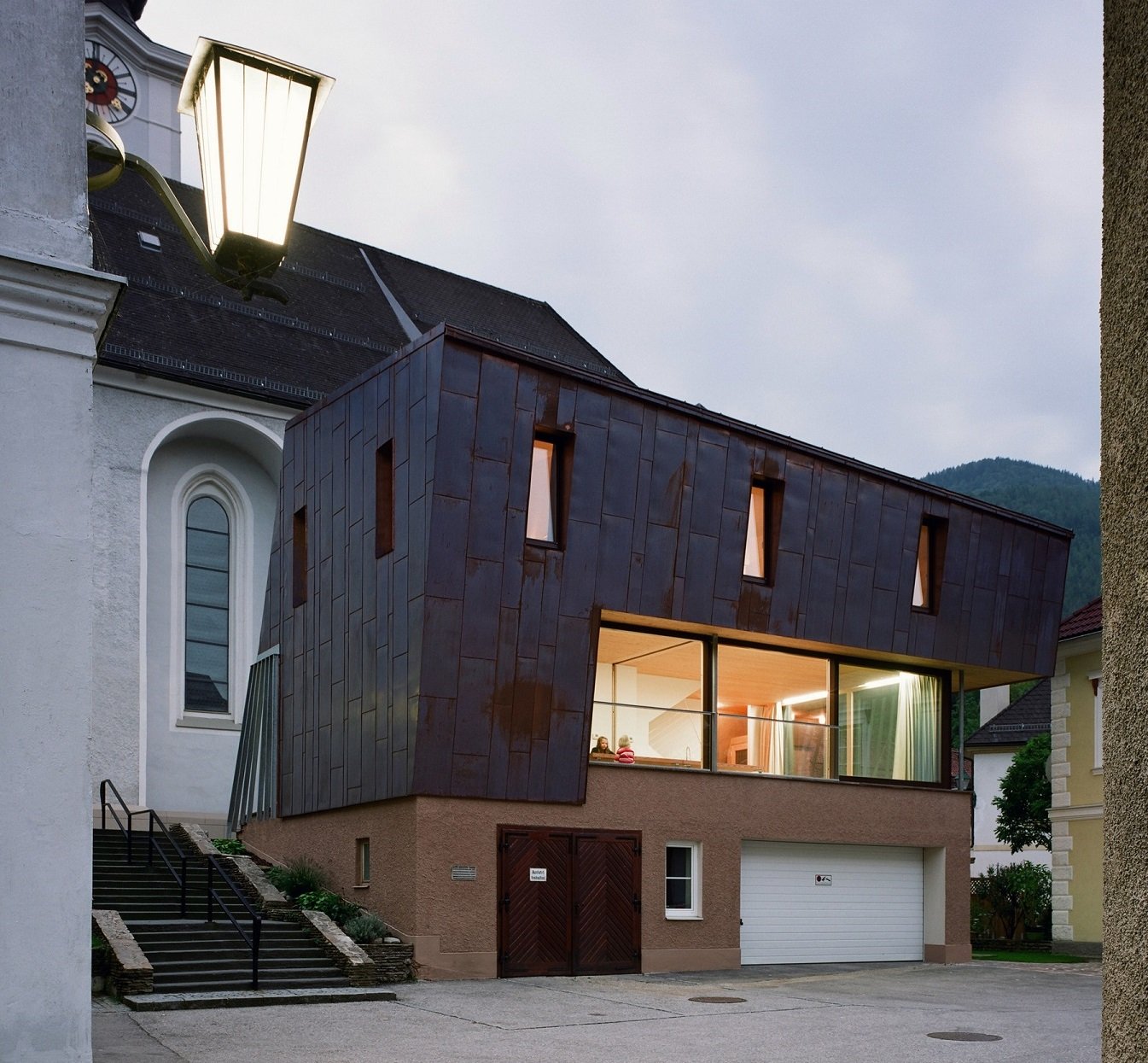#13454. Contrasting Metal Facade of a Modern Extension to a Historic Building

Here we see a striking example of modern architectural integration, where a new structure harmoniously coexists with a historic building. This project demonstrates an interesting contrast between the white plaster of the traditional building with a church tower and the new structure with dark metal cladding.
The facade of the modern extension is covered with dark metal panels, creating a textured surface with a rhythmic pattern. The choice of material—likely oxidized copper or patinated steel—gives the building both a contemporary and industrial character, while its dark tone creates a visual connection with the dark roof of its historic neighbor.
The lower section of the modern building is finished in a contrasting beige-brown color, creating the effect of a "floating" upper volume. Large panoramic windows on the second floor provide abundant natural light to the interior spaces and visual lightness to the structure. Small vertical windows in the upper part of the facade create an interesting rhythm and give the building's appearance individuality.
This project shows how modern architecture can be successfully integrated into a historical context. When designing a facade for your own home, several techniques can be adopted: contrasting materials to highlight architectural volumes, using modern materials in traditional surroundings, and thoughtful placement of windows of different sizes to create an expressive appearance.